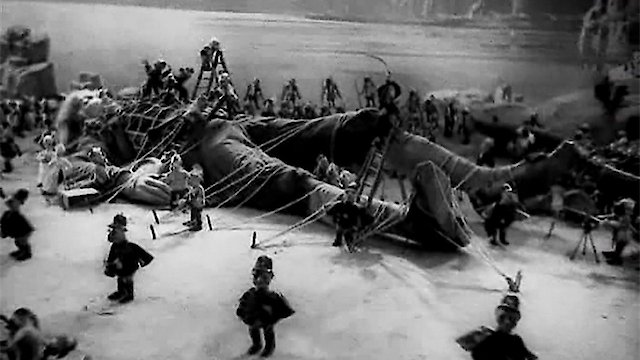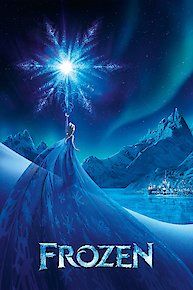
The New Gulliver
Where to Watch The New Gulliver

The New Gulliver (Novyy Gulliver) is a fascinating Soviet cinema classic that reimagines Jonathan Swift's iconic tale Gulliver's Travels, produced in 1935. Directed by the tandem of Aleksandr Ptushko and Aleksandr Bushkin, it stars Vladimir Konstantinov, Ivan Yudin, and Ivan Bobrov. A truly unique film, it uses remarkable technical achievements to successfully blend live-action performances with stop-motion animated sequences.
The film introduces us to a young protagonist named Gulliver, portrayed by young actor Vladimir Konstantinov, who is not a ship's surgeon, as Swift portrayed him, but a Pioneer – a member of a Soviet Communist youth organization. His journey begins in the modern world of labor and industriousness.
The narrative takes off with Gulliver's shipwreck on the shores of the kingdom of Lilliput. Much like Swift's protagonist, he is initially discovered and then tied down by the miniature inhabitants of the island. However, the film offers a singular political and social contrast to Swift's Lilliputians. The kingdom is depicted not as a fantastical land populated by bizarrely petty and quarrelsome beings but as a caricature of the pre-revolutionary Russian society. The residents are divided into oppressive ruling classes that mirror those seen in pre-Soviet eras, and oppressed working classes that strongly resemble Soviet workers of the 1930s.
Gulliver's interaction with Lilliput and its inhabitants forms the crux of the film. He becomes the torchbearer of revolution for the oppressed Lilliputians, portraying the propaganda message of the film through the medium of a mythical journey. Ivan Yudin and Ivan Bobrov's moving performances as the Lilliputian characters bring depth and dimension to the narrative, further enriching the storyline.
A groundbreaking aspect of The New Gulliver is the innovative use of stop-animation puppetry. The mastery with which the filmmakers have achieved integrating the live-action Gulliver with a world of animated puppets is surely commendable. The puppet animation, overseen by Ptushko, used cutting-edge techniques to render a vivid atmosphere, serving as a formative influence on many animation works that would follow. The result is a visual feast that captures the palpable spirit of the era, leaving the audience spellbound with the pioneering film techniques on display.
Also notable is the film’s sound design. Despite being released during the early years of synchronized sound cinema, the film exhibits a rich blend of dialogue, sound effects, and music. The film's musical score, in particular, underscores and elevates the socio-political themes of the film. It engages the audience while providing a strong and stirring backdrop to the dramatic events unfolding on the screen.
While the film stands out in its technical prowess, the narrative's political undertones must not be ignored. As it was conceived and created during the Stalinist era, it carries the hefty ideological message of Communist propaganda, aiming to instill socialist ideals in its audience. The film prescribes to the belief system of its time, representing the antagonists of the story as the oppressive regime that is to be overthrown by the noble ideals of Communism embodied by Gulliver and the humble proletariat of Lilliput.
Yet, in spite of its historical and socio-political context, the film does not lose sight of its artistic merit. It remains an engaging fairy-tale-like journey that innovates on its source material. Gulliver's adventures come alive in exciting ways, charming audiences with deft storytelling and riveting visuals. The film manages to balance its serious themes with a fantastical charm that lends it a timeless appeal.
In conclusion, The New Gulliver is more than just an adaptation of Jonathan Swift's famous novel. It is a unique blend of fantasy, reality, and innovative moviemaking that truly earmarked the era of Soviet cinema. Amidst the backdrop of social revolution, it tells the story of societal change and the unspeakable powers of the masses when united in their struggle against oppression. A testament to the exceptional creativity and craftsmanship of its makers, The New Gulliver is an intriguing exemplar of Soviet-era film.
The New Gulliver is a Kids & Family, Fantasy, Animation movie released in 1935. It has a runtime of 75 Critics and viewers have rated it moderate reviews, with an IMDb score of 6.4..




















